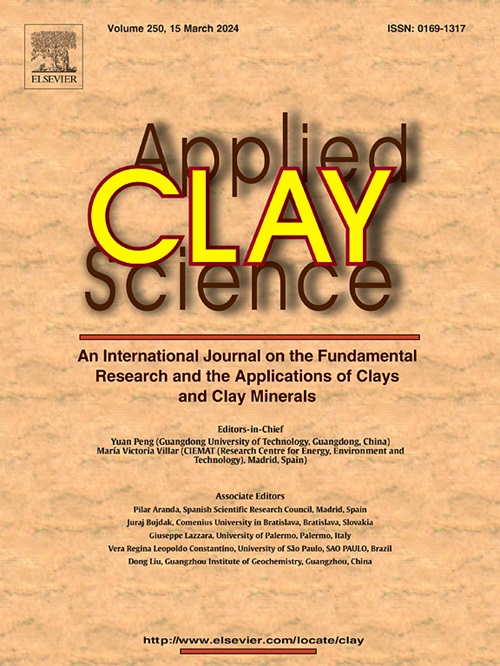Hydrocalumite and hydrocalumite-type compounds: A special type of layered double hydroxides
IF 5.3
2区 地球科学
Q2 CHEMISTRY, PHYSICAL
引用次数: 0
Abstract
An exhaustive bibliographical review of one of the most peculiar Layered Double Hydroxides, LDH, namely hydrocalumite and hydrocalumite–type compounds, has been carried out. The main differences that make hydrocalumite a special and interesting LDH are described, as well as the main methods of synthesis. A comprehensive comparison is also made with respect to MgAl–carbonate hydrotalcite with a Mg/Al molar ratio of 2. Thermal behavior of hydrocalumite is also different than that of other LDH, leading to the formation of attractive Mixed Metallic Oxides, MMO. Thus, the applications of hydrocalumite, hydrocalumite–type compounds and the derived MMO in environmental remediation and heterogeneous catalysis and photocatalysis are presented. Hydrocalumite, contrary to hydrotalcite, is not currently commercialized on an industrial scale, probably because its preparation is more complicated. Considering the excellent properties of hydrocalumite and the price, abundance and biocompatibility of its components, the scaling of its production should be a key challenge to take advantage in its industrial application.

求助全文
约1分钟内获得全文
求助全文
来源期刊

Applied Clay Science
地学-矿物学
CiteScore
10.30
自引率
10.70%
发文量
289
审稿时长
39 days
期刊介绍:
Applied Clay Science aims to be an international journal attracting high quality scientific papers on clays and clay minerals, including research papers, reviews, and technical notes. The journal covers typical subjects of Fundamental and Applied Clay Science such as:
• Synthesis and purification
• Structural, crystallographic and mineralogical properties of clays and clay minerals
• Thermal properties of clays and clay minerals
• Physico-chemical properties including i) surface and interface properties; ii) thermodynamic properties; iii) mechanical properties
• Interaction with water, with polar and apolar molecules
• Colloidal properties and rheology
• Adsorption, Intercalation, Ionic exchange
• Genesis and deposits of clay minerals
• Geology and geochemistry of clays
• Modification of clays and clay minerals properties by thermal and physical treatments
• Modification by chemical treatments with organic and inorganic molecules(organoclays, pillared clays)
• Modification by biological microorganisms. etc...
 求助内容:
求助内容: 应助结果提醒方式:
应助结果提醒方式:


